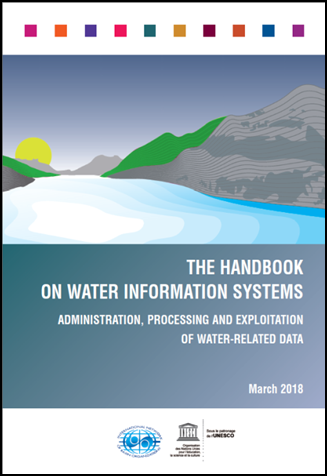Handbook Water Information Systems

Water challenges are growing due to climate, demographic and socio-economic situations. These increased pressures potentially trigger conflicts: between uses (irrigation, drinking, industry, hydropower, etc.) and between regions and countries. In addition, flood and drought events continue to devastate many parts of the world combined with an increasing threat to water ecosystems.
Whether at basin, national or transboundary level, easy access to information on the status and evolution of water resources and uses is one of the keys to successful water policy implementation.
Water resource managers need to be able to get hold of reliable, up-to-date and relevant information for their activities related to regulation, planning, adaptation to climate change, risk management and public information.
Unfortunately, the necessary data and information are usually fragmented/incomplete/dispersed and heterogeneous, and accessing them is often difficult to organize for numerous reasons (e.g. multiplicity of data producers, inconsistency of data and information).
As a result, the data capital regularly produced by the various actors is underutilized, and the capacities for producing the information required for efficient water policy implementation are often very limited.
This situation may result in significant negative economic impacts as crucial planning decision may be taken with partial, insufficient and imprecise data and information. However, it can be improved with a minimum of political will, and an ad hoc action plan aiming firstly to rationalize existing information, fill the biggest gaps in data collection and make it easy to access and understand.
This handbook aims to provide decision-makers with strategy pointers for efficient water data management, and to guide any organization that would like to develop its capacities for producing, accessing, processing and making good use of the water-related data and information necessary for implementing an Integrated Water Resources Management policy.
Coordination of the handbook production in partnership with representatives of INBO, UNESCO, WMO, Bureau of Meteorology/WWDI and IOWater.
It includes many case studies provided by the partners and collected through INBO networks partners.
Chapter II underlines why water data management is so important and makes general recommendations to avoid common mistakes.
Chapter III describes the five basic components and processes to be taken into consideration when organizing water-related information systems:
- Water data governance organization;
- Data production processes;
- Integrated data management procedures required to organize the exchange of comparable data produced by various institutions/organizations and to develop interoperability between the information systems of the institutions managing data;
- Data processing aiming to transform the available datasets into useful information to support decision-making processes and answer the needs of the various public sectors targeted;
- Dissemination of information process tools and procedures facilitating the dissemination of information.
Chapter IV presents Water Information Systems (WIS) through their diverse uses, with some basic principles of implementation and several case studies illustrating how WIS are implemented for:
1. IWRM and planning at basin and national levels
2. Climate change adaptation
3. Flood and drought management
4. Ecosystem protection
5. Sectorial water resource management (drinking water, irrigation, etc.)
6. Reporting (SDG, WFD, etc.)
7. Transboundary basin management.
Finally, the conclusion underlines some perspectives for development and innovation in this sector in the coming years.
Handbook available at https://www.riob.org/pub/HandBook-SIE-en/
